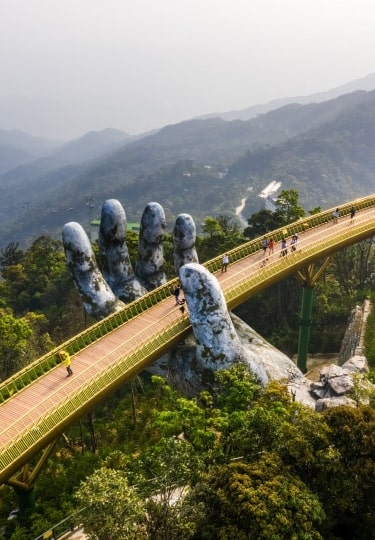Vietnam offers a diverse range of attractions—floating villages and bustling markets; impressive museums and UNESCO World Heritage Sites; stunning beaches and soaring mountains. In its vibrant cities, you’ll find things to do in Vietnam to suit all kinds of interests, from foodies and culture enthusiasts to history buffs and nature lovers.
From lounging on white-sand beaches to exploring historic monuments and pagodas and marveling at towering limestone islands, this country will unearth the adventurer in you. Vietnam manages to keep a healthy balance of feeling off-the-beaten-path while offering accessible tourist attractions, so you’ll always find something to do here.
Here are some of the most inspiring things to do in Vietnam.
Step Back in History at the Reunification Palace
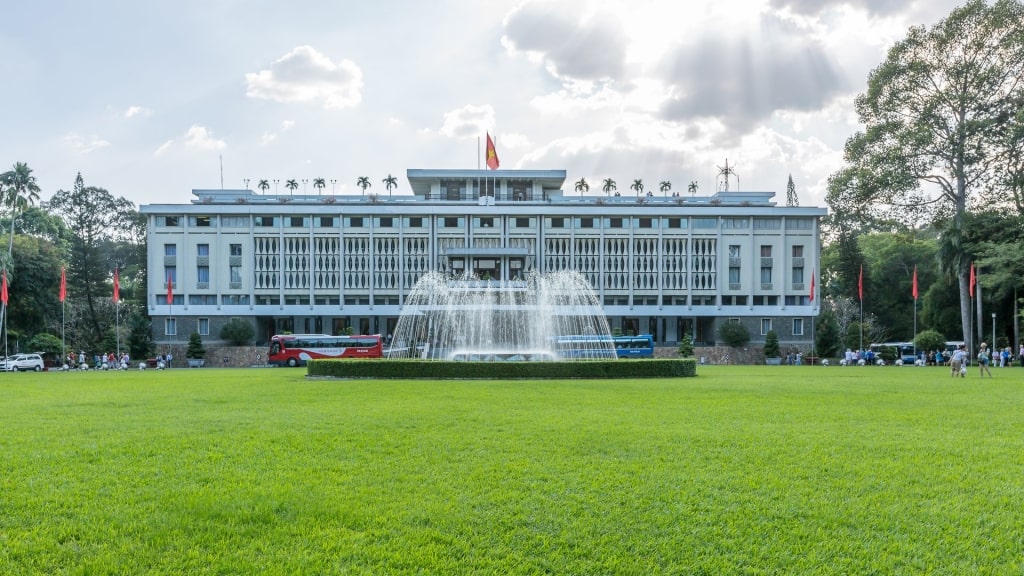
Reunification Palace, Ho Chi Minh City
Also referred to as Independence Palace, this historical landmark in the Ho Chi Minh City center draws many visitors interested in learning about its intriguing history. The structure, built in 1962, is an example of architectural excellence and is one of the top Vietnam tourist attractions.
The Reunification Palace was constructed on the same site as the former Norodom Palace, which was destroyed by protestors in the 1950s. Tours will take you through the halls where the President of South Vietnam lived and worked during the Vietnam War as well as pointing out numerous historical artifacts. You’ll feel like you’re stepping back in time with the well-preserved decor and architectural style.
Walk through the tunnels of the basement, study old photographs and oil paintings, and check out the sprawling oval lawn filled with gardens and tranquil ponds. An exhibition dedicated to the evolution of the palace will have even the most curious visitor satisfied.
Stroll the Golden Bridge
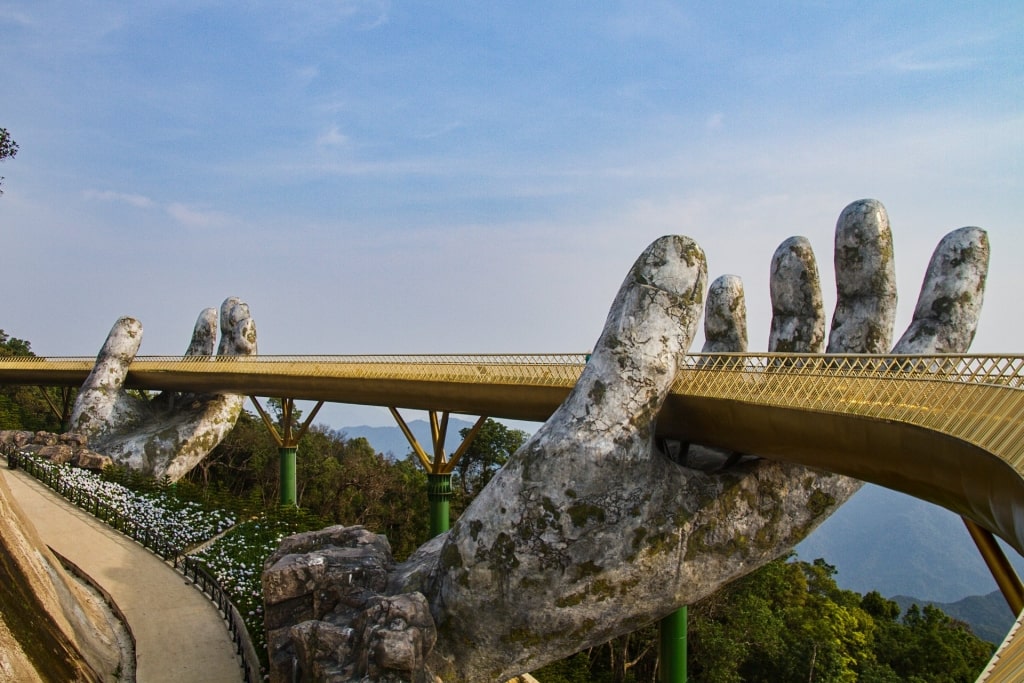
Golden Bridge, Da Nang
A truly photogenic destination on the outskirts of the coastal city of Da Nang, Sun World Ba Na Hills is a fun-filled attraction for all ages. This amusement park, surrounded by a gorgeous natural setting, is filled with activities like a cable car ride, game zone, detailed French village recreation, and several restaurants.
Perhaps the main attraction is the Golden Bridge, a creatively designed footbridge featuring two giant, mythical hands. The 490-foot-long pedestrian bridge has become one of the most famous places to visit in Vietnam for its beautiful artistry and unique appearance of being held in the sky.
Other than providing sprawling views, the bridge connects the cable car hub to the colorful gardens. Strolling this cinematic walkway will feel like you’ve been transported into the pages of a fantasy novel.
Explore Sung Sot Cave
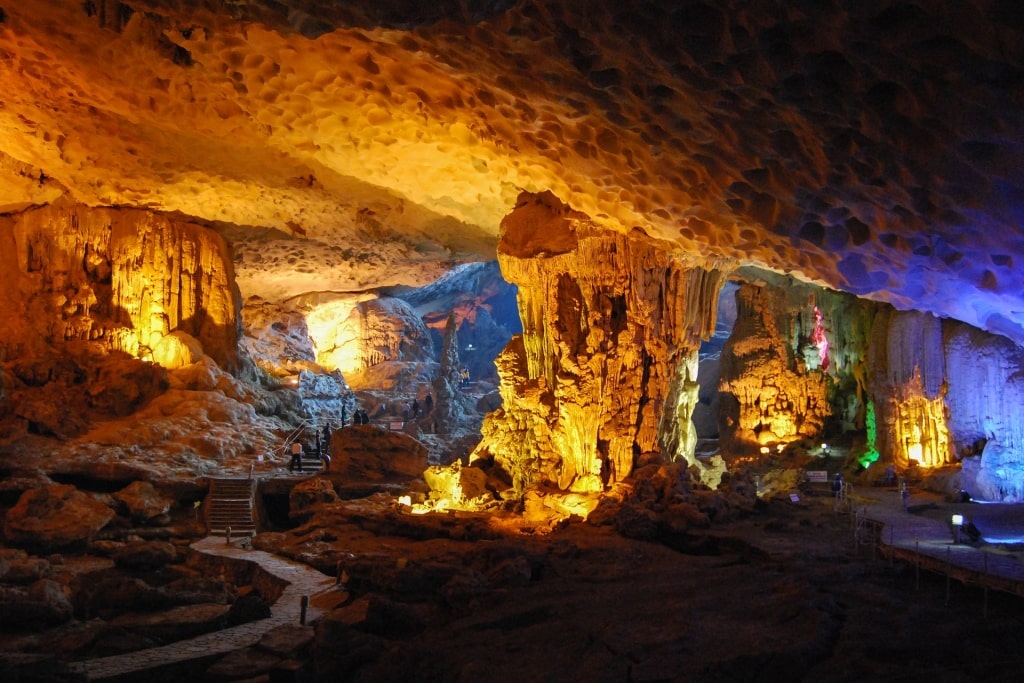
Sung Sot Cave, Ha Long Bay
Located in the stunning Halong Bay, Sung Sot Cave is the biggest cave you’ll find in the bay. The journey to the cave will leave you breathless as you glide past the towering limestone islands protruding from the sea.
Walkways wind you through two sections of this natural wonder, adorned with fascinating stalagmites and stalactites. In the second chamber, the cave ceiling soars and rock formations have been identified as various animals by the Vietnamese. Each animal is said to have a legend attached to it, like the horse, said to have defeated evil spirits.
Take in the Views From the Tram Huong Tower
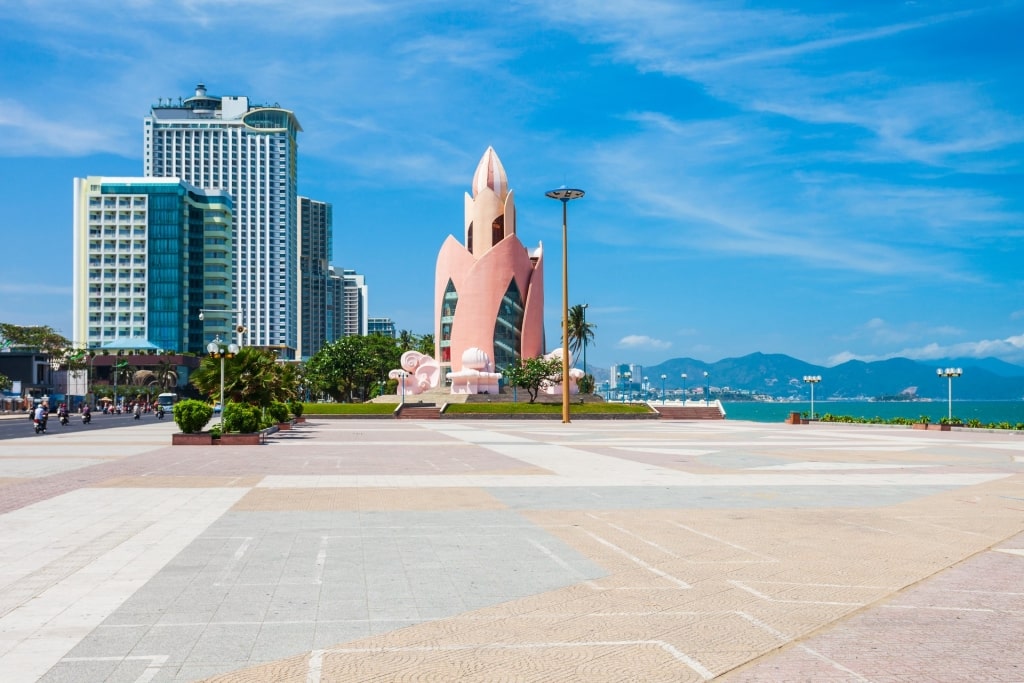
Tram Huong Tower, Nha Trang
This lotus-shaped structure by the beach in Nha Trang is an icon of this seaside city due to its unique design. The orange tower, which resembles a flower, certainly stands out on the edge of the main beach along Tran Phu Boulevard.
The observation platform at the top provides panoramic views of both the beach and city below. A relaxing stroll or bicycle ride on the promenade in Nha Trang will bring you to this well-known landmark, also known as the “incense tower.”
Crawl Through the Cu Chi Tunnels
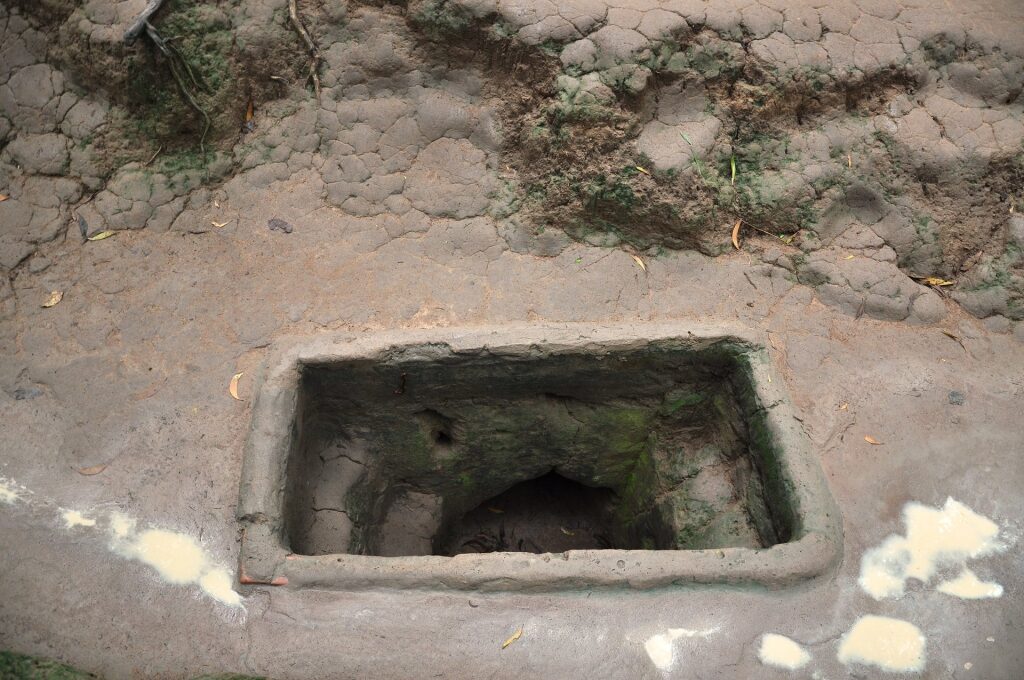
Cu Chi Tunnels, Ho Chi Minh City
In the northwest portion of Ho Chi Minh City, you’ll find a web of underground tunnels used in the Vietnam War. Soldiers used these tunnels as living quarters, kept supplies there, and as a base to set traps and prepare surprise attacks.
Creating the tunnels, which stretch a total of 75 miles, wasn’t an easy feat—they were dug by hand between the late 1940s and early 1960s. During your visit, you can even crawl through some of these tunnels and observe artifacts from the war while a tour guide shares the history behind the Cu Chi Tunnels.
Marvel at the Thien Mu Pagoda
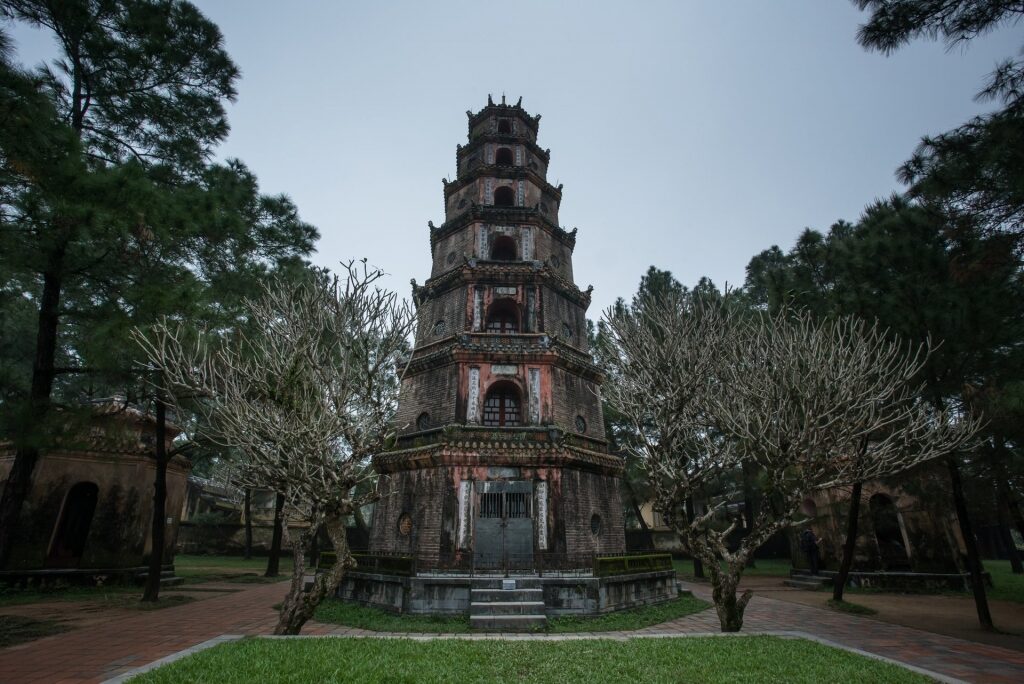
Thien Mu Pagoda, Hue
Perched upon Ha Khe Hill along the picturesque Huong River lies Thien Mu Pagoda, an octagonal Buddhist temple that resembles a layered cake. Known as the “Pagoda of the Heavenly Lady,” this artful structure is as pleasing to the eyes as it is an icon to the country of Vietnam.
The 68-foot-tall Phuoc Duyen Tower is the star structure of the pagoda. Each of its seven stories symbolizes various reincarnations of Buddha. A giant bell, peaceful gardens, and two smaller pagodas are some of the other notable attractions that make up the complex. A visit to the pagoda via a traditional dragon boat makes this an unforgettable experience.
Browse Hanoi’s Old Quarter
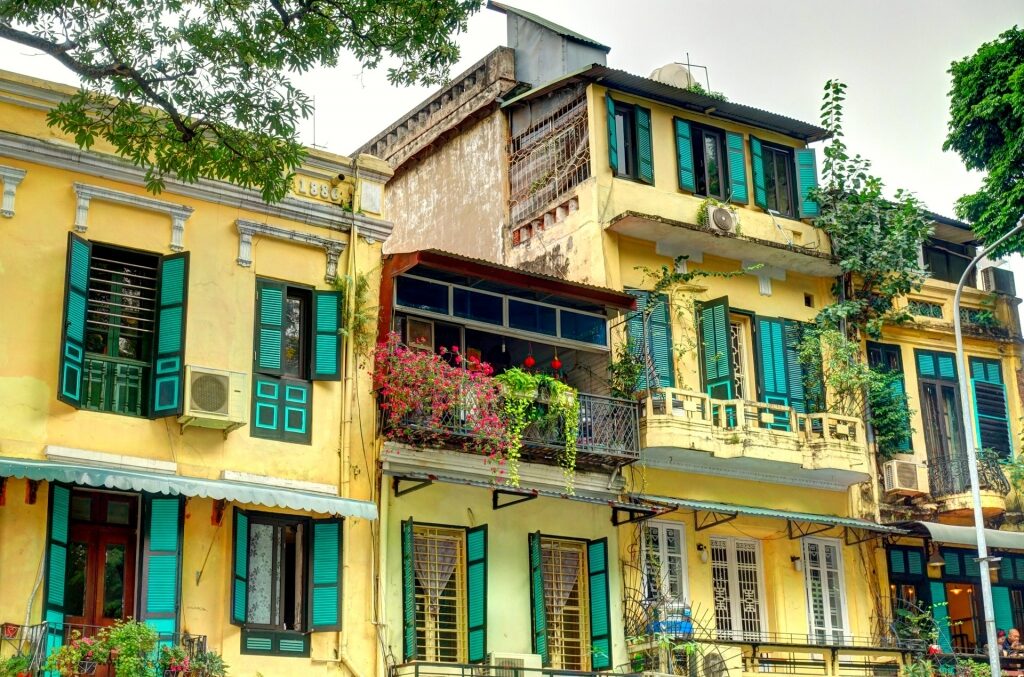
Old Quarter, Hanoi
Hanoi’s Old Quarter, located north of Hoan Kiem Lake, charms and delights by mixing old and modern in a Vietnamese cultural cocktail. Made up of 36 artisan street sectors paying homage to their traditional craft, the Old Quarter is a lively spot to browse, eat, and shop. You’ll find local creators like basket weavers, shoemakers, tailors with silk clothing, and bag makers selling their wares.
In between browsing the shops, sample authentic cuisine at one of the restaurants nearby. Every weekend, a buzzing night market offers another opportunity to find unique Vietnamese souvenirs and indulge in the city’s culture through food at the numerous stalls serving delicious bites.
Make sure to try Bun Cha (kebab rice noodles) and egg coffee while in the city.
Appreciate Architecture at the Po Nagar Cham Towers
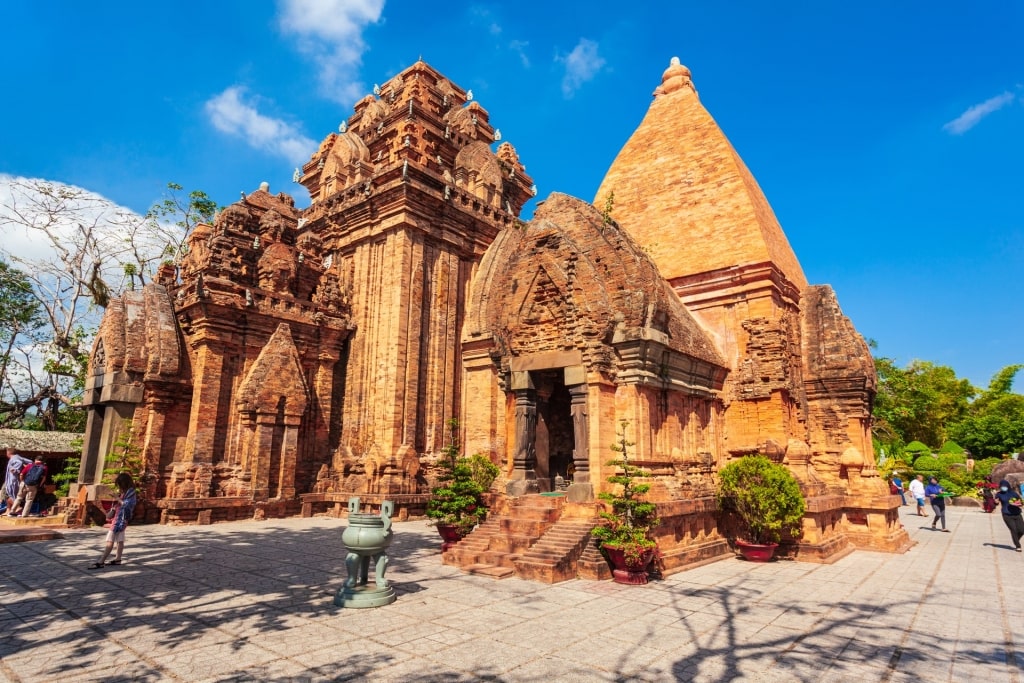
Po Nagar Cham Towers, Nha Trang
The Eastern-facing series of temples in the historic Champa Kingdom lies just outside of the seaside city of Nha Trang. The attractive three-story temple sits on a hill, providing a beautiful setting to learn about the history and appreciate the detailed architecture of this sacred site.
Its four remaining towers honor the goddess of the Dua clan, who governed the southern portion of the Cham Kingdom and taught skills such as weaving and agriculture to the people under her rule. Each April, a festival with sacred dances, rituals, and prayers occurs to pay homage to the goddess Po Nagar, whose name translates to “Mother of the Country.”
Sample Local Food at the Ben Thanh Central Market
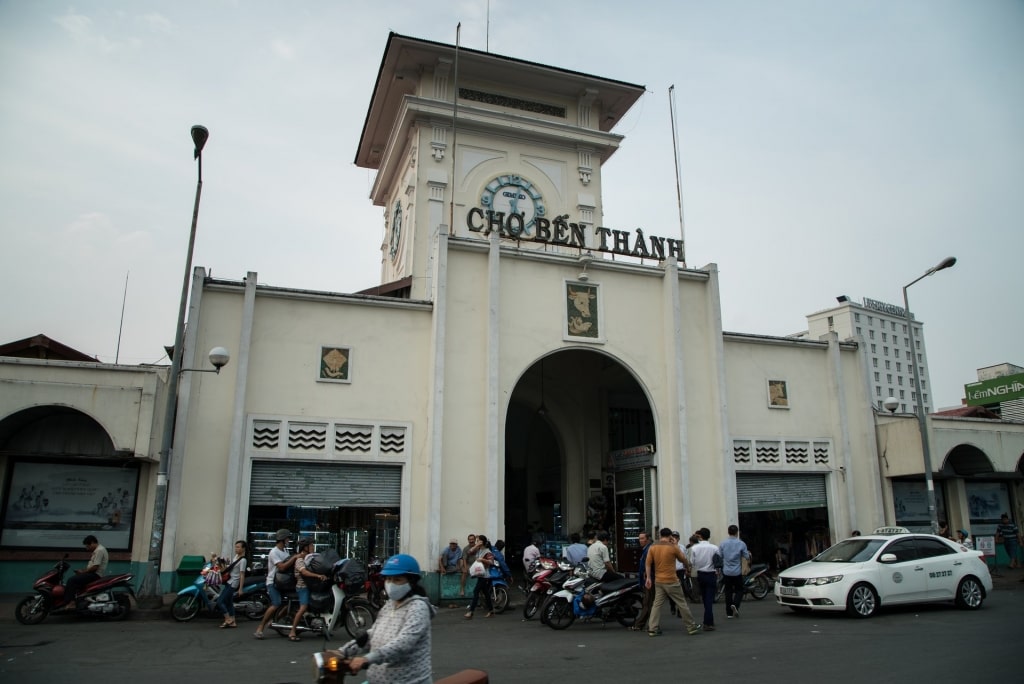
Ben Thanh Central Market, Ho Chi Minh City
It’s no secret that Vietnamese food is amazing. If you’re a foodie, one of the best things to do in Vietnam is to go to a local market. The Ben Thanh Central Market is a bustling street-food haven where you will get your fill. Picnic table style benches provide community seating to enjoy your local fare with a cold beer.
Try the banh da xuc hen, which is lemongrass clams topped with a rice cracker and sprinkled with sesame and coconut. Another popular item to try is bun thit nuong, a bowl filled with rice vermicelli noodles, lettuce, pork, and topped with a crispy pork spring roll. The classic pho shouldn’t be missed either—although the soup originated in Hanoi, you can sample the southern style here in Saigon.
Trek up the Marble Mountains
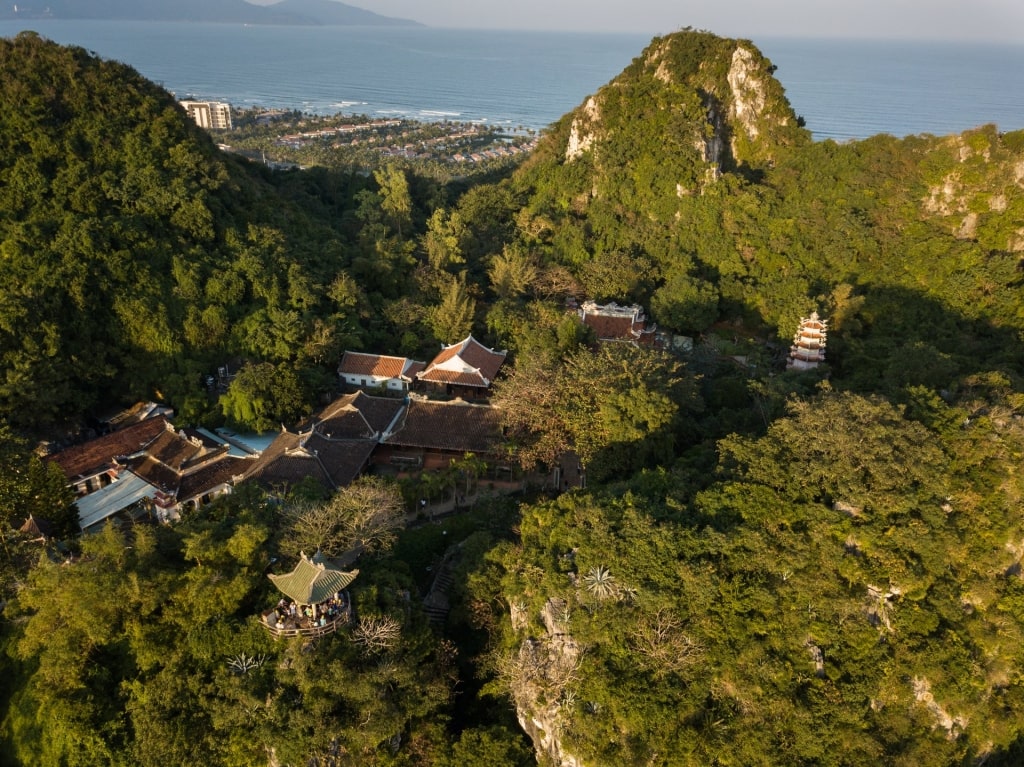
Marble Mountain, Hue
The Marble Mountains, between the cities of Da Nang and Hoi An, are a collection of five limestone and marble hills named after the five elements: earth, water, fire, metal, and wood.
Legend has it that a mystical dragon laid an egg on the nearby beach, and after a thousand days, a stunning girl hatched. What was left of the egg’s shell on the sand grew into the mythical Marble Mountains.
Trekking up the mountains will grant you spectacular views of the surrounding area and My Khe Beach, one of Vietnam’s best beaches. Ancient 17th-century pagodas adorn the Mountain of Water, which also houses several caves. It’s an exciting area to explore on foot if you enjoy hiking.
Laugh at the Hanoi Water Puppet Theater
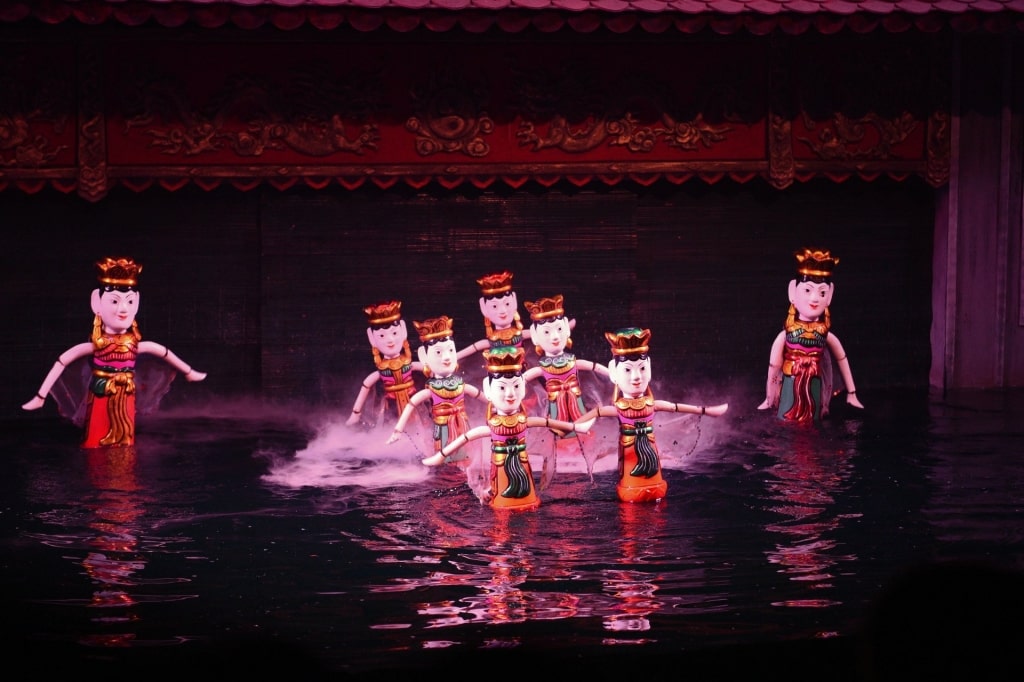
Hanoi Water Puppet Theater
One of the best theaters in the world, the Thang Long Water Puppet Theater is a famous traditional Vietnamese form of performing arts dating back to the 11th century. Derived from the method employed long ago, the theater gained its name because villagers performed puppetry for entertainment in waist-high water that had flooded the rice fields in the Red River Delta.
Authentic live music with drums, bamboo flutes, cymbals, guitars, and singing accompanies the stories, often with a humorous twist. Performers in Hanoi use large poles to hold the puppets over a pool of water while sharing folktales and legends with the audience.
Order a Meal from a Floating Restaurant in the Mekong Delta
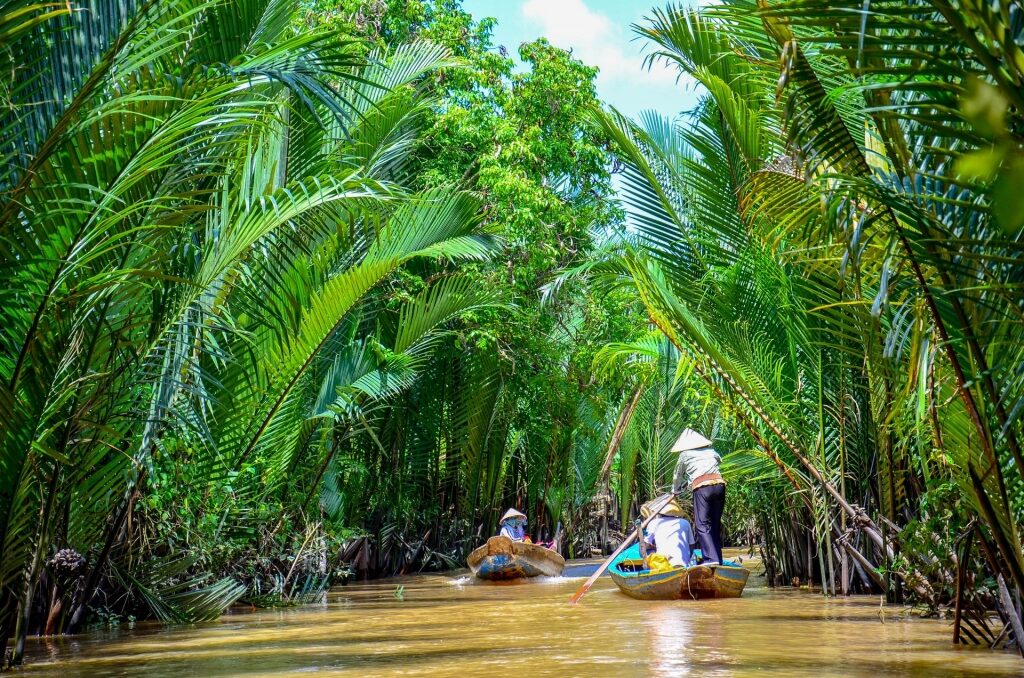
Mekong Delta
Known to locals as the River of Nine Dragons, the Mekong Delta is a lush region with much to offer by way of landscape, culture, and authentic experiences. The area’s largest town and capital, Can Tho, is a great base for exploring the area.
At the Cái Răng floating market, numerous vendors sell local goods and produce like mangosteen and durian. You can even purchase a full meal from one of the boats. Visit in the morning and order Vietnamese coffee and breakfast while observing the atmospheric buzz of trading amongst local residents.
While there, you might spot the Bình Thuỷ Ancient House, a French colonial-style dwelling built in the 1800s.
Take a Cooking Class
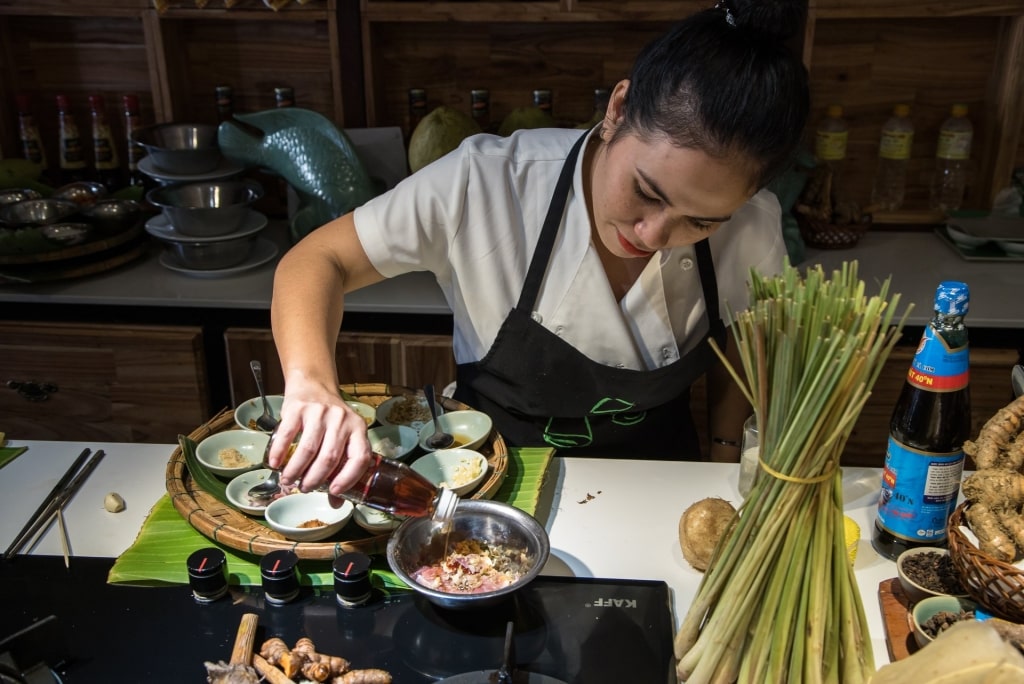
Cooking class in Hue
In a land where the cuisine is a portal to its rich culture, taking a cooking class is a great way to immerse yourself.
In Hoi An, you’ll find culinary delights specific to the region and a wide array of places hosting classes. Many cooking lessons also include a visit to the Central Market, where you can see the fresh ingredients and the process of choosing and purchasing what you need for each dish.
Try your hand at making classics like banh xeo, a rice pancake with prawns; nom hoa chuoi, a banana flower salad; Vietnamese spring rolls; and bun thit nuong, pork with vermicelli noodles.
Armed with a copy of the recipes you learned, the skills you’ll pick up in a cooking class is one of the best souvenirs you can gift yourself when you recreate the meals at home. This is definitely one of the top things to do in Vietnam.
Stand in History at Ba Dinh Square
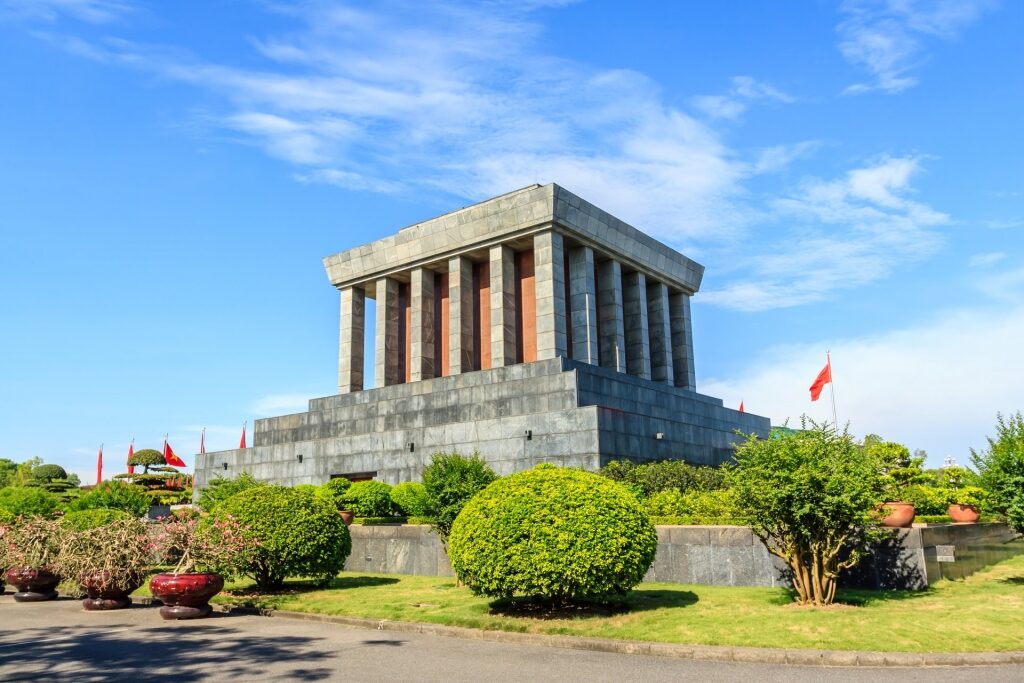
Ho Chi Minh Mausoleum, Hanoi
Historical Ba Dinh Square, one of the top Vietnam tourist attractions, is perhaps most well known for the Presidential reading of the Declaration of Independence in 1945, signifying the beginning of the People’s Democratic Republic of Vietnam.
Today, the square is a popular green space for people to unwind in the midst of the bustling city. Arrive in time for the daily flag-raising ceremony, then wander the grounds and people watch. After your visit, head to the nearby Presidential Palace, Ho Chi Minh Mausoleum and museum, and the One Pillar Pagoda.
Vung Tau City
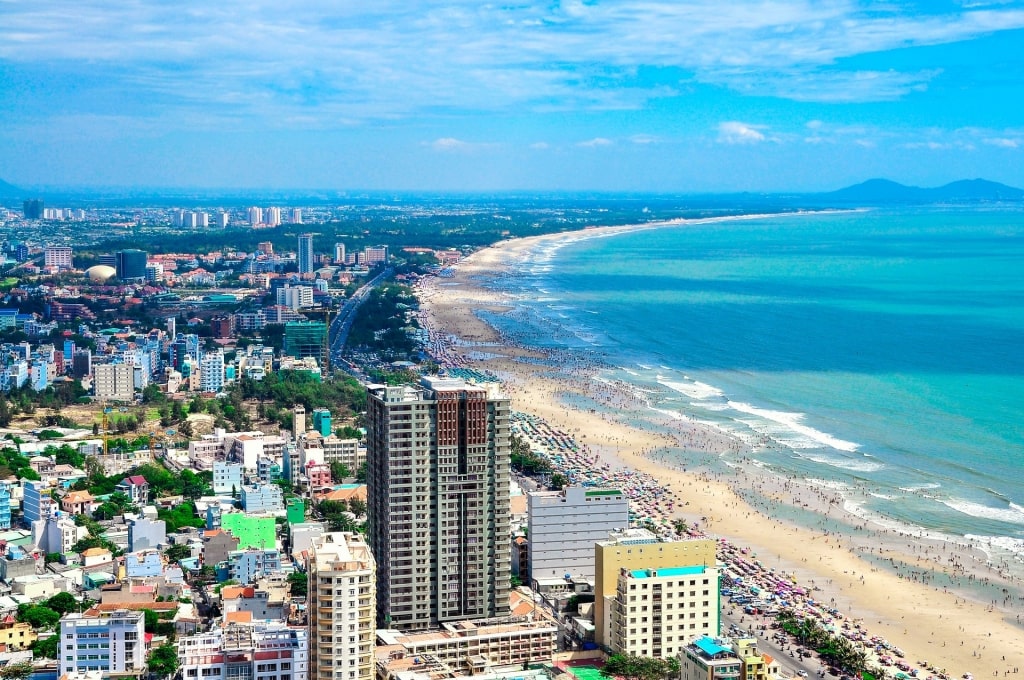
Vung Tau City
Previously a French colonial village, Vung Tau City is a popular destination for sun-seekers with relatively close proximity to Ho Chi Minh City. A two-hour trip grants you a break at some of the best beaches in Southeast Asia, away from the hustle and bustle of city life.
There are four beaches in this resort-town catering to all types of beach-goers. Front Beach is perfect for seafood-lovers, with many options for eating fresh catches from the sea while people-watching. Back Beach is a surfing hotspot; both the classic surf sport as well as kite-surfing.
Pineapple Beach is best for relaxation and swimming in calm waters. At Paradise Beach, you’ll have to pay an entrance fee which will give you access to showers and sit-down restaurants.
While you’re in the area, consider hiking to the oldest lighthouse in Vietnam, which sits behind Núi Nhỏ Mountain. The picture-perfect scene is worth the effort.
Visit Yen Tu Temple, Yen Tu Mountain
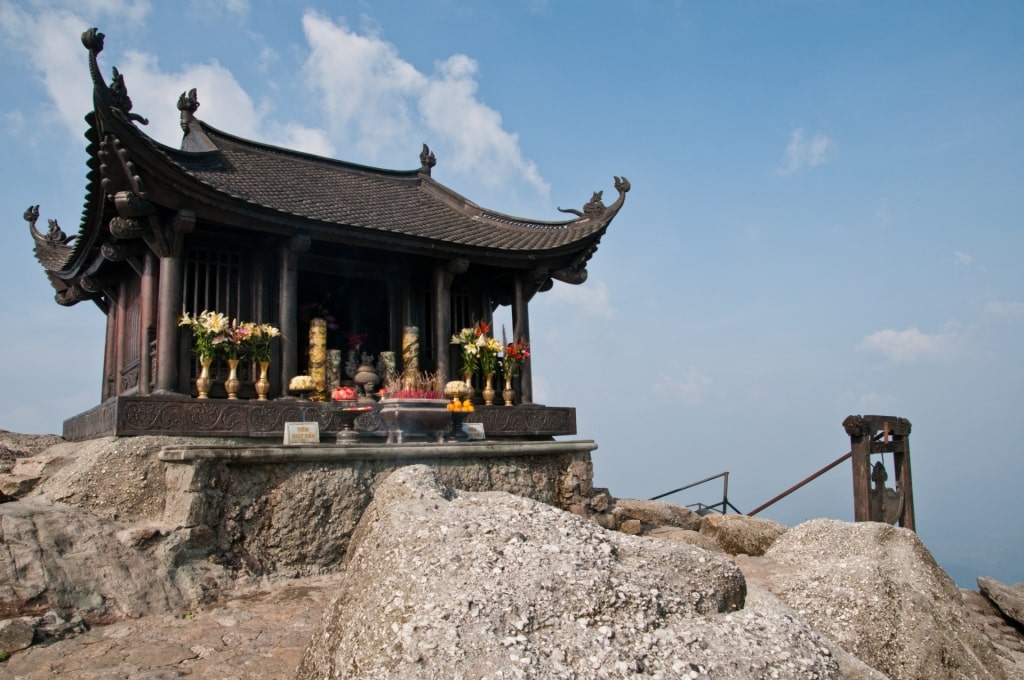
Yen Tu Temple, Yen Tu Mountain
Some 60 miles east of Hanoi lies pine-covered Yen Tu Mountain, home to the Truc Lam Zen Sect of Buddhist monks, the only school of Buddhism to originate in Vietnam.
As such, this incredible place is known as the Sacred Capital of Vietnam, a land of mountain-top pagodas, giant statues of Buddha, temples, and ornate bridges over gushing streams.
The most famous of the temples is the Dong Pagoda, sitting at the mountain’s highest peak, some 3,500 feet above sea level. The road to such stunning enlightenment supposedly comes from making a pilgrimage up the thousands of steps that lead to Dong. For those looking for a slightly easier route, there are also a couple of cable cars that journey to the top.
Marvel at Notre Dame Cathedral, Ho Chi Minh City
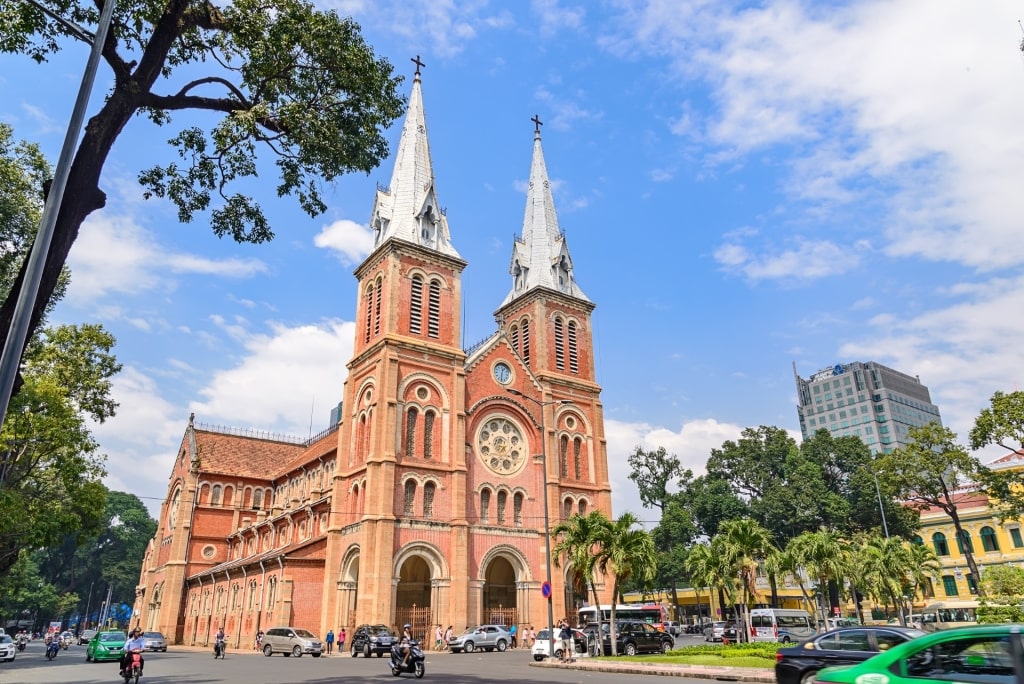
Notre Dame Cathedral, Ho Chi Minh City
Ho Chi Minh City’s Notre Dame Cathedral Basilica of Saigon made world headlines back in 2005 when a statue of the Virgin Mary outside this French colonial-era church is said to have shed a tear.
While the church refuted that the tear was an actual miracle, it hasn’t stopped hundreds of people flocking here daily looking for a repeat showing. To date, they’ve been disappointed, but a visit to the cathedral is still one of the best things to do in Vietnam.
Set in the downtown area, it was constructed in the 19th century with materials entirely imported from the “old country”—red bricks for the façade from Marseille and stained-glass windows from Chartres.
Aside from the statue of Mary, the cathedral’s other main draw is its twin bell towers. Added in 1895, they reach a height of 190 feet and are one of the city’s most significant landmarks.
Rub a Turtle Head at the Temple of Literature, Hanoi
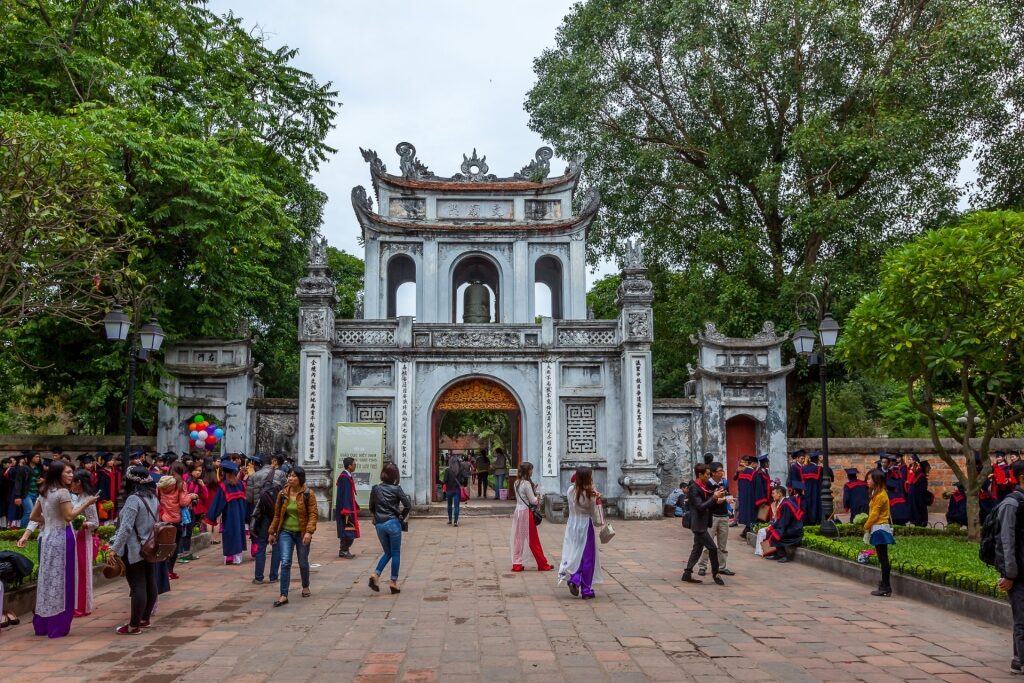
Temple of Literature, Hanoi
Built in 1070 by Emperor Lý Thánh Tông and set in the heart of Hanoi, the Temple of Literature was Vietnam’s first national university.
Dedicated to Confucius, it went on to become a place to educate the country’s elite, royalty, and most famous scholars, including Chu Van An, a 13th-century teacher whose legacy still inspires the country’s educational values today.
One of the best things to do in Vietnam, the temple is a sight to behold with five courtyards and lovely, leafy gardens that are home to ancient trees and ponds.
Look out for the 82 stone steles mounted on statues of turtles, an animal revered in Vietnamese culture for its longevity and wisdom. If you spot a student rubbing one of the statue’s heads, fear not—it’s meant to bring good luck in their exams.
Stroll Through Hoi An’s Old Town
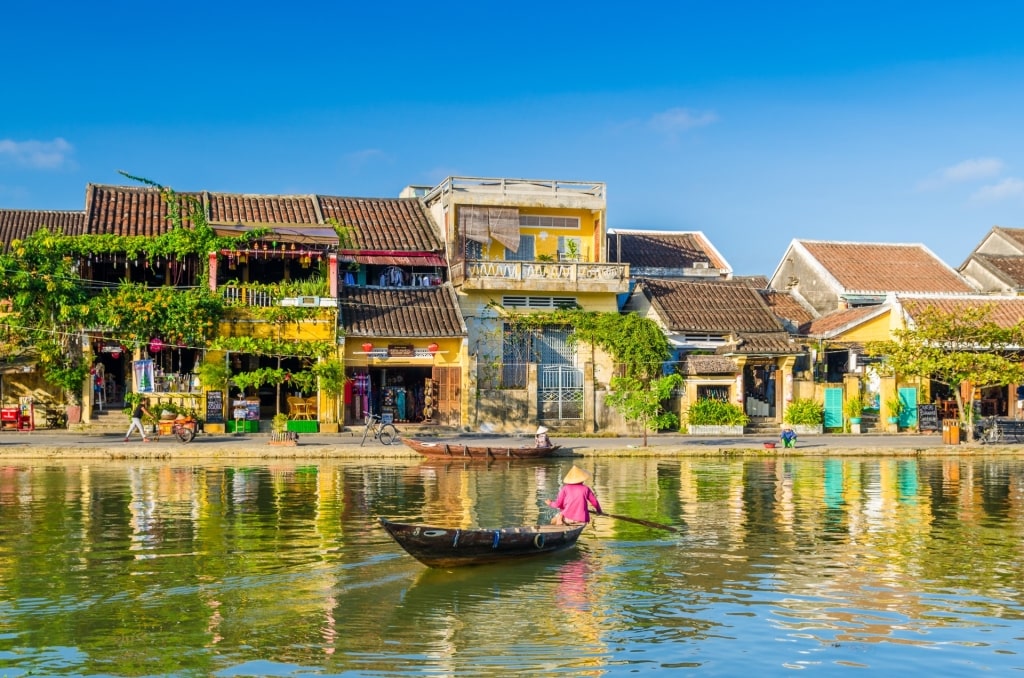
Old Town, Hoi An
Hoi An’s location made it strategically insignificant during the Vietnam War, meaning that it escaped the worst of the conflict, allowing it to become one of the country’s best-preserved ancient towns.
Set along the Thu Bon River, the Old Town is an architecture lover’s dream: a mix of wooden Chinese shophouses, French colonial buildings, and Vietnamese tube houses—a legacy of Hoi An’s former status as a thriving international trading port between the 15th and 19th centuries.
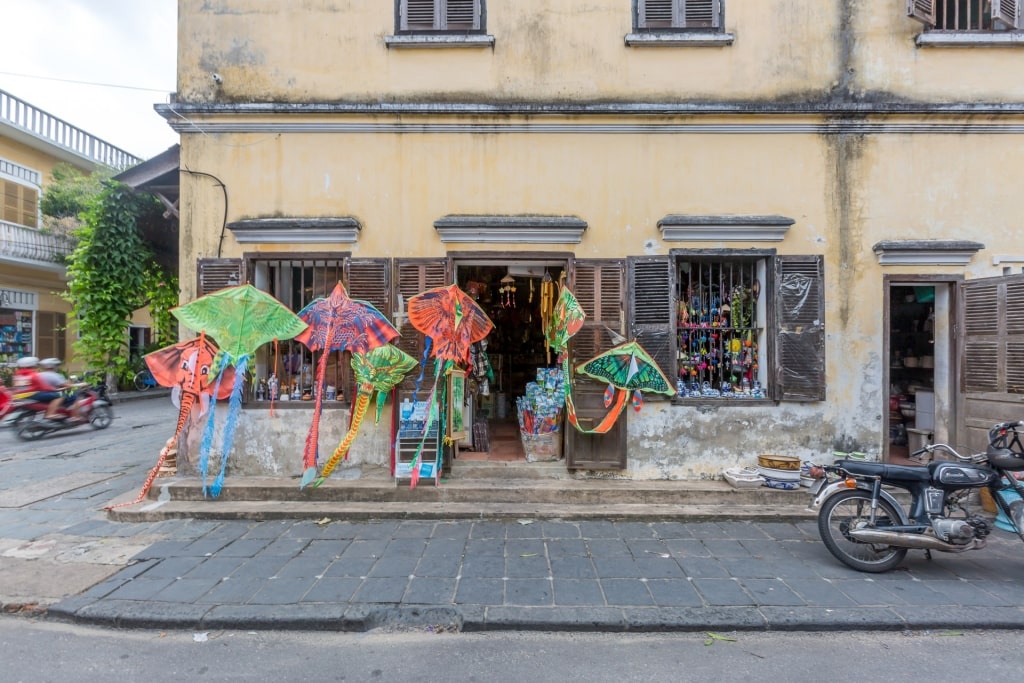
Old Town, Hoi An
Walking around the Old Town today is a delight thanks to more than 800 historic buildings; look out for the 17th-century ornate Japanese Covered Bridge, an excellent stop for photos.
Hoi An is also a great place to pick up souvenirs including lanterns and ceramics. Tailors in the Old Town, meanwhile, are said to be the best in the country with the ability to create bespoke clothing in a matter of hours.
Read: Best Places to Visit in Southeast Asia
Get an Adrenaline Fix at VinWonders, Nha Trang
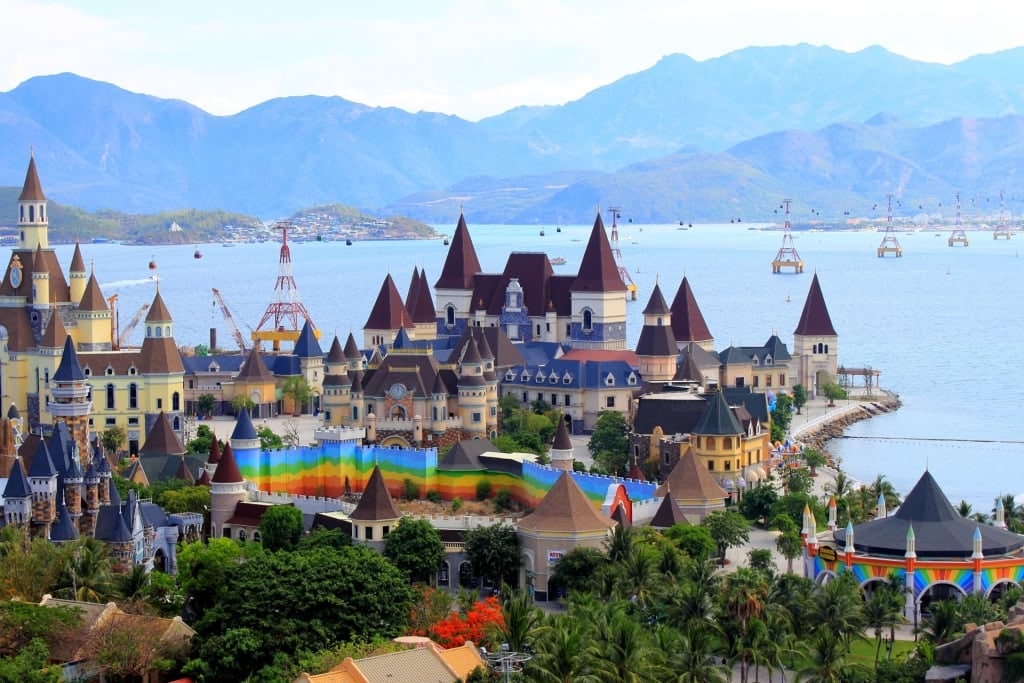
VinWonders, Nha Trang
The journey to the “Disneyland of Vietnam”, as the VinWonders theme park is often known, is as exhilarating as the rides in the park itself.
It’s set on Hon Tre Island and visitors get to the park by traveling on one of the world’s longest overwater cable cars, stretching for almost 11,000 feet over Nha Trang Bay, on the 15-minute ride from the city of Nha Trang.
Once there, there are six different areas to explore, with attractions including roller coasters, submarine rides, a water park, botanical gardens, and a vast shopping mall. Shows include circus acts, dancing water fountains, and performances of everything from hip-hop to traditional Vietnamese music and dance.
Don’t miss the Aquarium with its 300-foot-long underwater glass tunnel offering a 360-degree view of marine life in the surrounding bay.
Enjoy the Municipal Theatre of Ho Chi Minh City
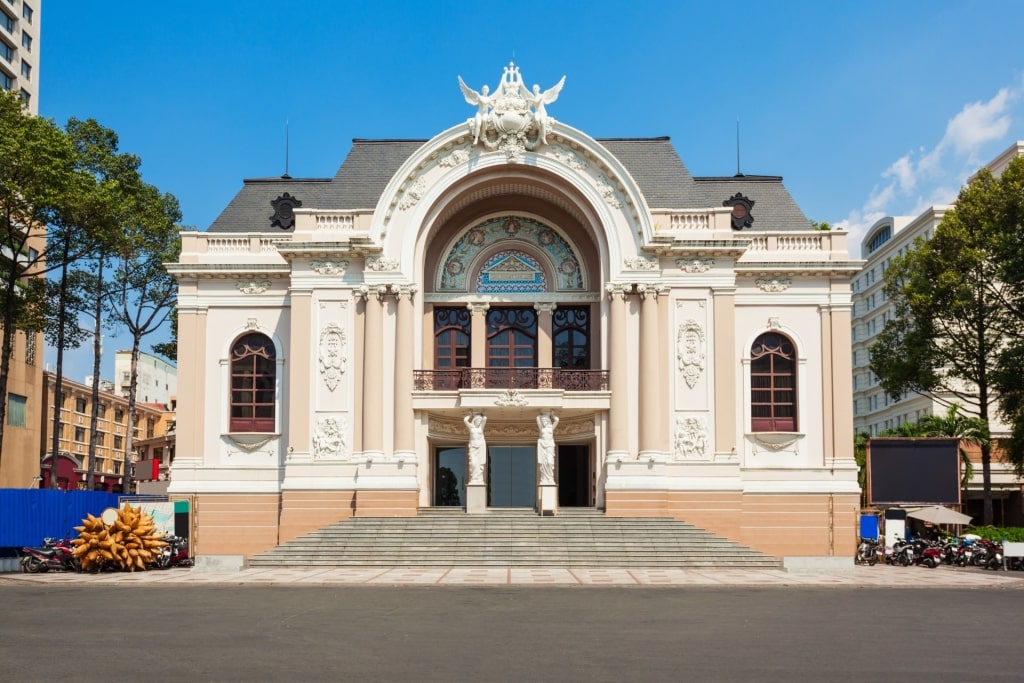
Municipal Theatre, Ho Chi Minh City
Built in 1898 in the French 3rd Republic’s flamboyant style, the Municipal Theatre of Ho Chi Minh City has gone through several name changes, including the original Théâtre de Saïgon and the National Assembly Building during the Republic of Vietnam period.
Most people, however, colloquially refer to it as the Saigon Opera House. Whatever you choose to call it, there’s no doubt that this elegant building is one of the best things to see in Vietnam. Set at 7 Lam Son Square, it is not only architecturally stunning, but it also hosts world-class performances of opera, ballet, and traditional Vietnamese theater.
Even if you don’t have time to attend a performance, it’s still worth a visit. Guided tours of the Opera House offer a behind-the-scenes look at the building’s architecture and history.
Pay Your Respects at the Ho Chi Minh Mausoleum, Hanoi
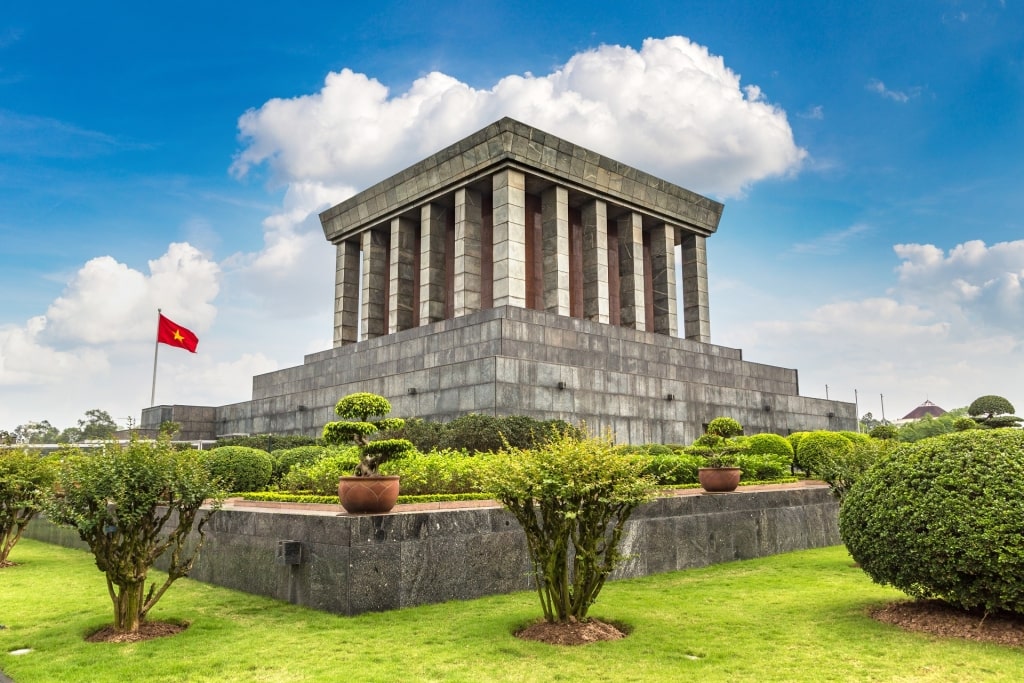
Ho Chi Minh Mausoleum, Hanoi
Inspired by Lenin’s Mausoleum in Moscow, the Ho Chi Minh Mausoleum in Ba Dinh Square is the final resting place of Ho Chi Minh. This revolutionary Vietnamese leader led the country to independence from French colonial rule in 1954 and served as President until his death in 1969.
Sitting solemnly over the square, the mausoleum’s design incorporates elements of Vietnamese architecture and was made from materials sourced around the country as a symbol of national unity.
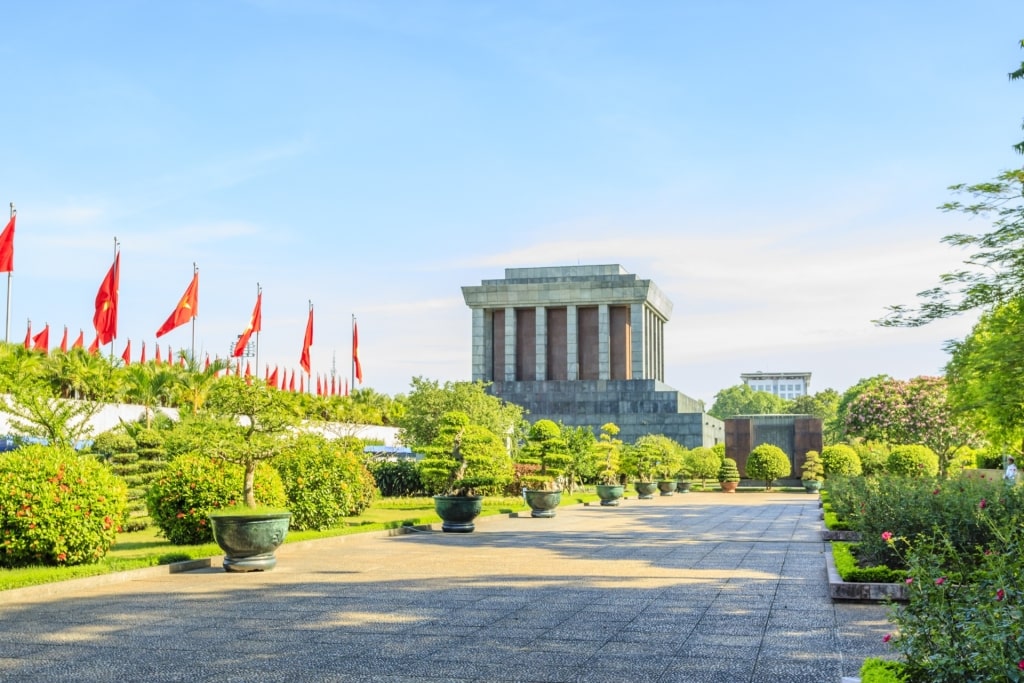
Ho Chi Minh Mausoleum, Hanoi
Visiting the site is seen by many Vietnamese as a pilgrimage, and those wishing to venture inside the tomb should note that it is a somber affair, with visitors requested to cover shoulders and knees as a mark of respect.
Visitors are also recommended to check opening times; the remains of “Uncle Ho”, as he was known, are transported to Russia every year for annual maintenance. For those not wishing to enter the mausoleum, there’s a daily changing of the guard ceremony outside.
Gain Perspective at the War Remnants Museum, Ho Chi Minh City
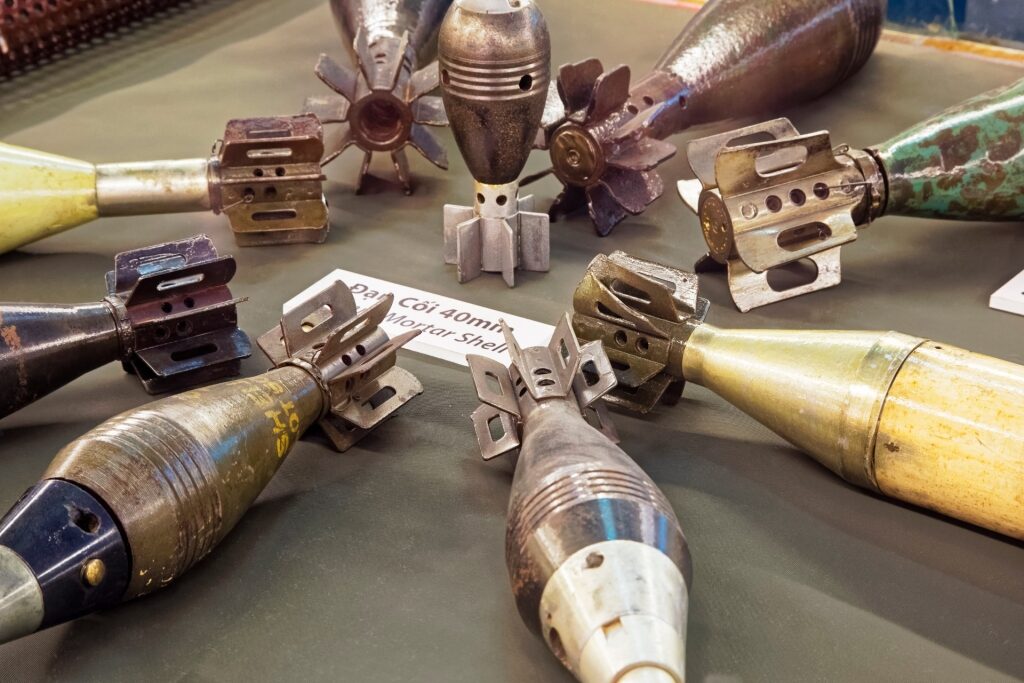
War Remnants Museum, Ho Chi Minh City
While the Vietnam War may have ended in 1975 and the country is a very different proposition now, the effects of the conflict still run deep. To get an alternative perspective to the Western view, Ho Chi Minh City’s War Remnants Museum is an excellent place to start.
Through various exhibits of photos, military equipment, and personal stories and artifacts, it takes a comprehensive look at the physical, social, and psychological effects of what the Vietnamese call the American War.
One of the most impactful sections is dedicated to the effects of Agent Orange, a chemical defoliant used in the conflict. The exhibit documents the devastating health consequences that continue to affect generations of Vietnamese people.
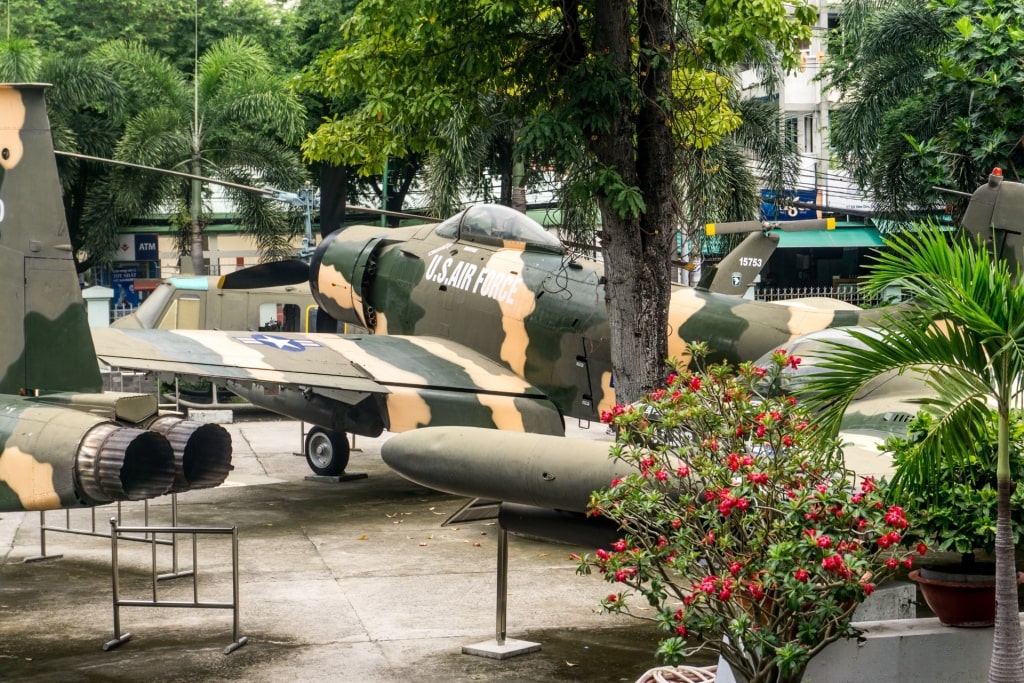
War Remnants Museum, Ho Chi Minh City
The museum’s courtyard, meanwhile, features a variety of military equipment, including helicopters, tanks, and fighter jets—a popular spot for photos. It’s worth noting that while some of the exhibits can be disturbing, the overall theme is one of peace, reconciliation, and the importance of understanding history to prevent future conflicts.
Indulge in a Mud Bath, Nha Trang
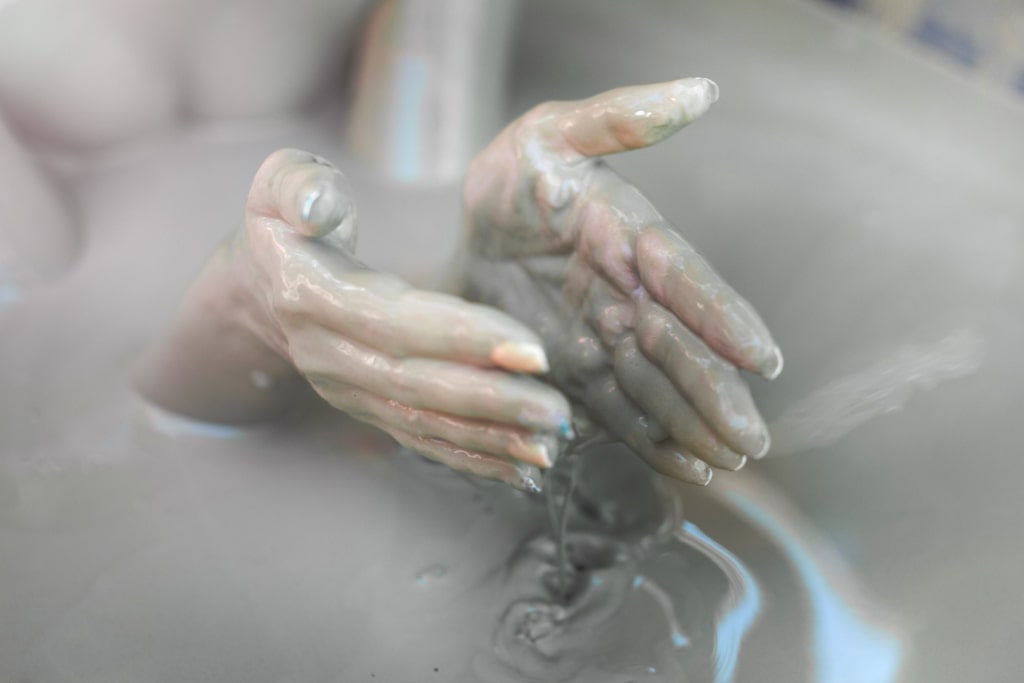
Mud bath in Nha Trang
If you’re looking to relax and unwind while simultaneously getting down and dirty, taking a mud bath in Nha Trang is one of the best things to do in Vietnam.
Mud bathing is a key element of a burgeoning Vietnamese spa culture and nowhere does it better than the wellness centers of Nha Trang, including the Thap Ba Hot Spring Center, I-Resort, and 100 Egg Mud Bath.
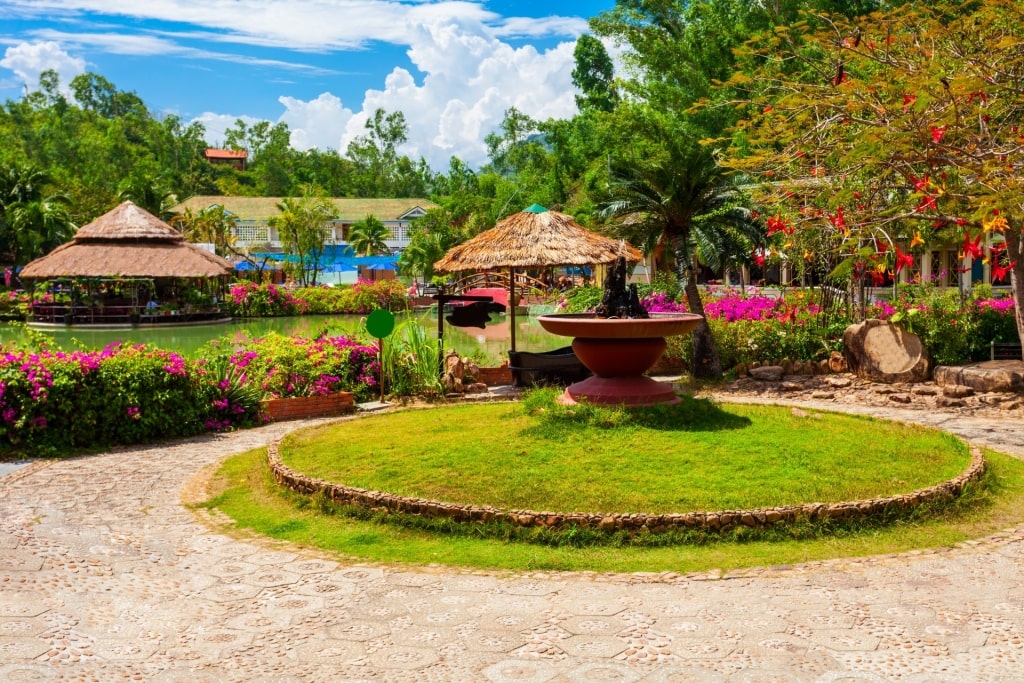
Thap Ba Hot Spring Center, Nha Trang
At these resorts, guests can relax in communal or personalized baths filled with mineral-rich mud, believed to have natural health-giving properties thanks to its high levels of calcium and magnesium.
Post-bath, there are relaxation areas, which often include hot mineral pools, waterfalls, and sunbathing lounges. For those looking for an alternative to “mudding”, other services include mineral water soaking, massages, and herbal treatments.
Gaze at the One-Pillar Pagoda, Hanoi
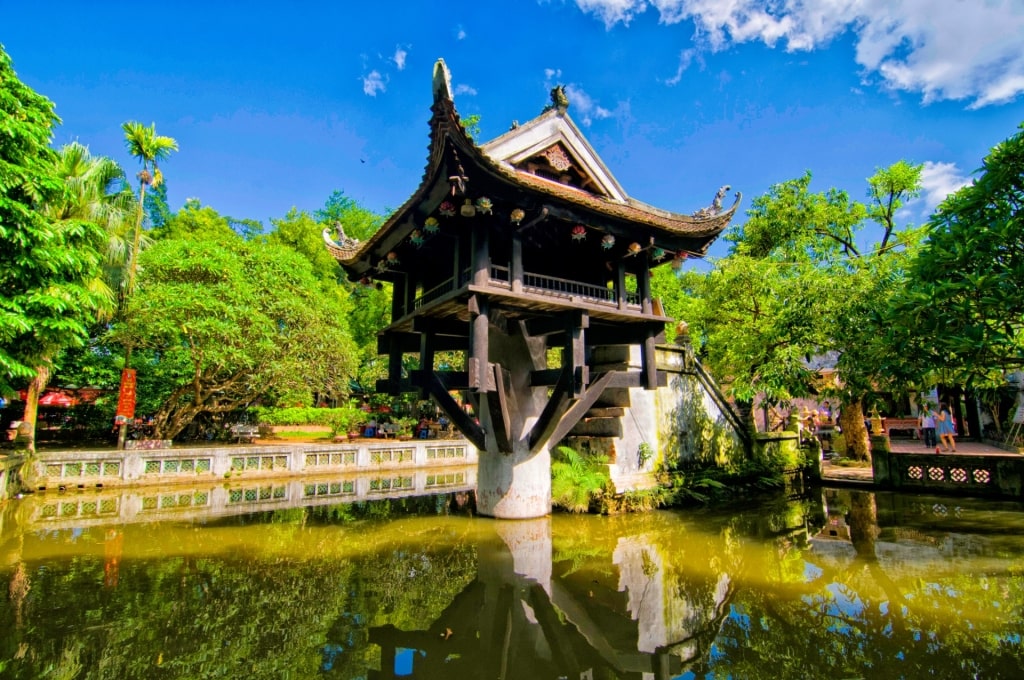
One-Pillar Pagoda, Hanoi
Part of the Ba Dinh District that also includes the Ho Chi Minh Mausoleum and the Ho Chi Minh Museum, visiting the One-Pillar Pagoda (Chùa Một Cột) is one of the best things to do in Hanoi.
Set on a single stone pillar in the middle of a lotus pond and designed to resemble a blooming lotus flower, it was originally built in 1049.
The pagoda was almost destroyed by French colonial powers in the 1950s but was restored to preserve its original design and significance, and today it remains an enduring symbol of Vietnamese Buddhism.
Hang Out with the Monkeys of Monkey Island, Halong Bay
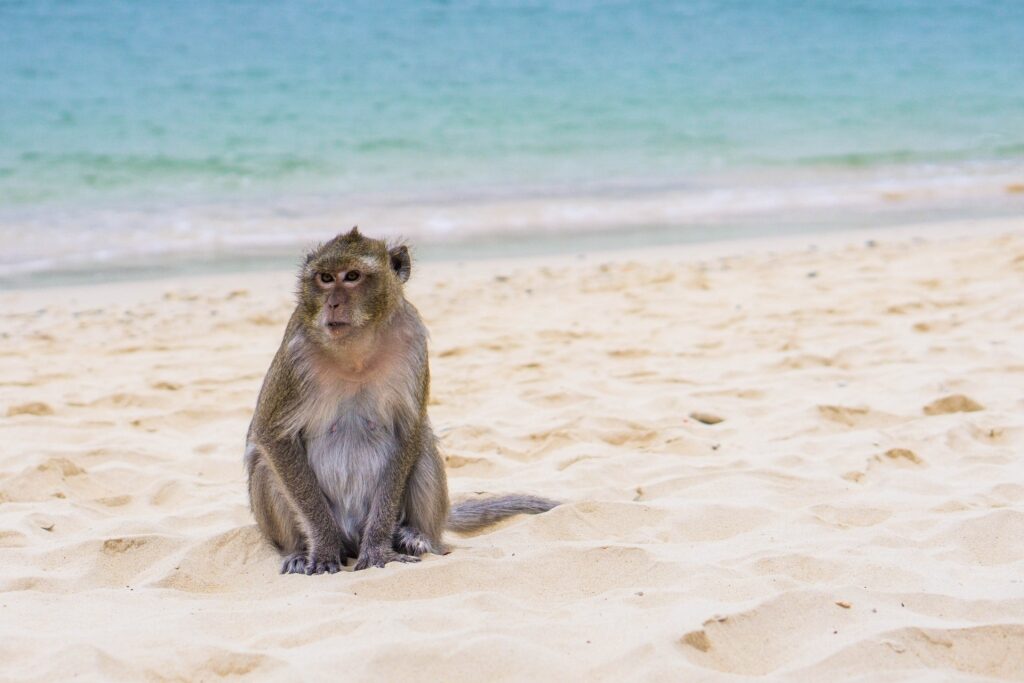
Monkey Island, Halong Bay
With its towering limestone pillars and hundreds of tiny islets, Halong Bay is one of the major sights that Vietnam is known for and one of North Vietnam’s prime destinations for tourism.
One of the best places to visit here is Monkey Island, known for being home to incredible beaches and a population of more than 1,200 primates, including red-faced monkeys and gray-haired monkeys.
These little scamps make for quite the show when you’re relaxing on a beach here. Their introduction to the island forced a name change from the original Cat Dua, which means Pineapple Sand after the wild pineapple trees that grow along the shores.
While they are a great draw, do take care of personal belongings for fear they may be taken off deep into the jungle here by the light-fingered apes.
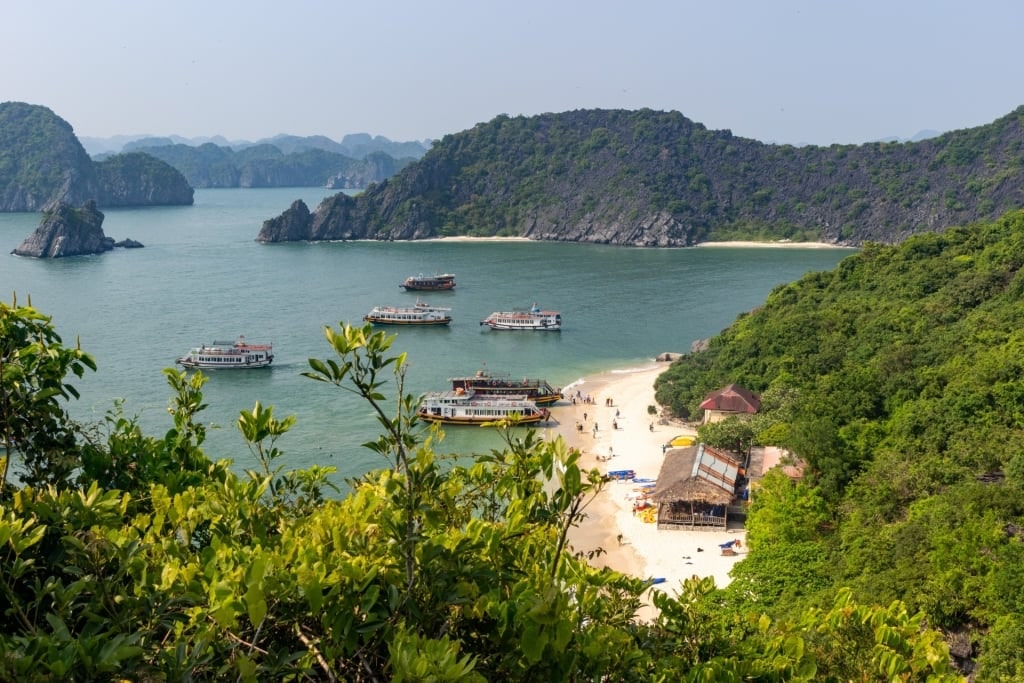
Monkey Island, Halong Bay
Monkeys are not the only reason to visit either. There’s excellent snorkeling just offshore, and a moderately difficult hiking trail to a viewpoint with panoramic views of Lan Ha Bay.
Taste Seafood in Nha Trang
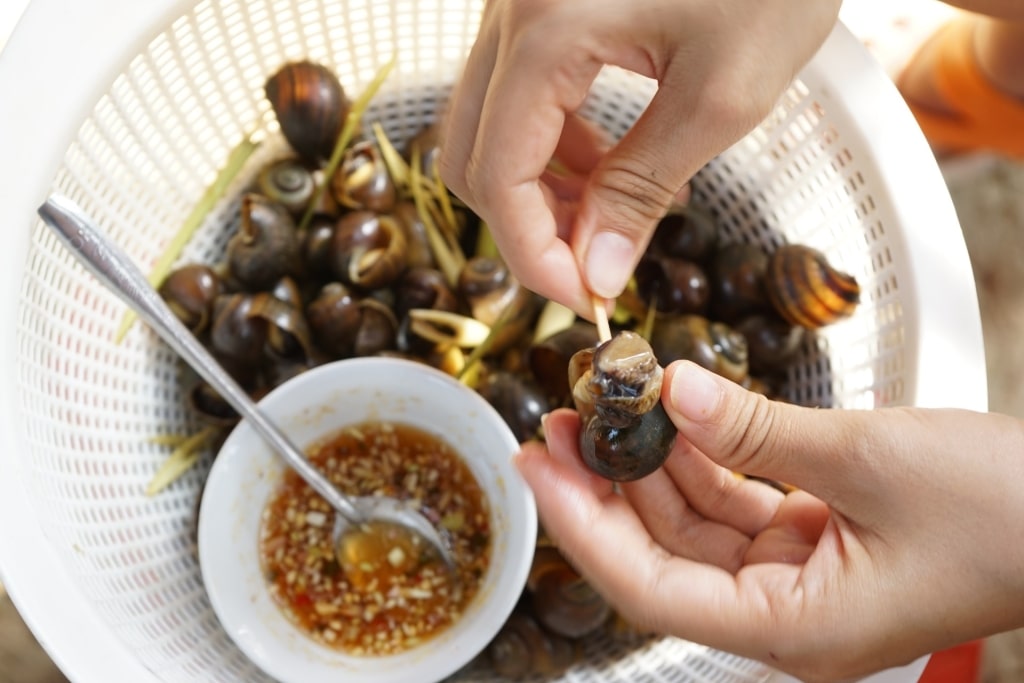
Seafood
Nha Trang’s location along a long stretch of the South China Sea coast means it is not only home to some of Vietnam’s best beaches but also the country’s best seafood.
Nha Trang was traditionally a fishing hub where generations of local families dedicated their lives to the trade and its seafood industry has grown alongside its reputation as a prime destination for visitors.
You can find a variety of seafood dishes in local markets such as Xom Moi and Dam, beachfront restaurants, and upscale dining establishments throughout the city; venture to the area north of Tran Phu Bridge for the best choices.
Freshness is key here, so look for establishments with fresh catch on ice or in tanks that allow you to choose your meal before it’s cooked.
Some restaurants offer extravagant seafood platters including a selection of crabs, clams, shrimp, and squid. For those more daring, a local delicacy that tastes much nicer than it sounds is “bun ca sua” (jellyfish noodle soup).
Explore the Chinese Quarter, Ho Chi Minh City
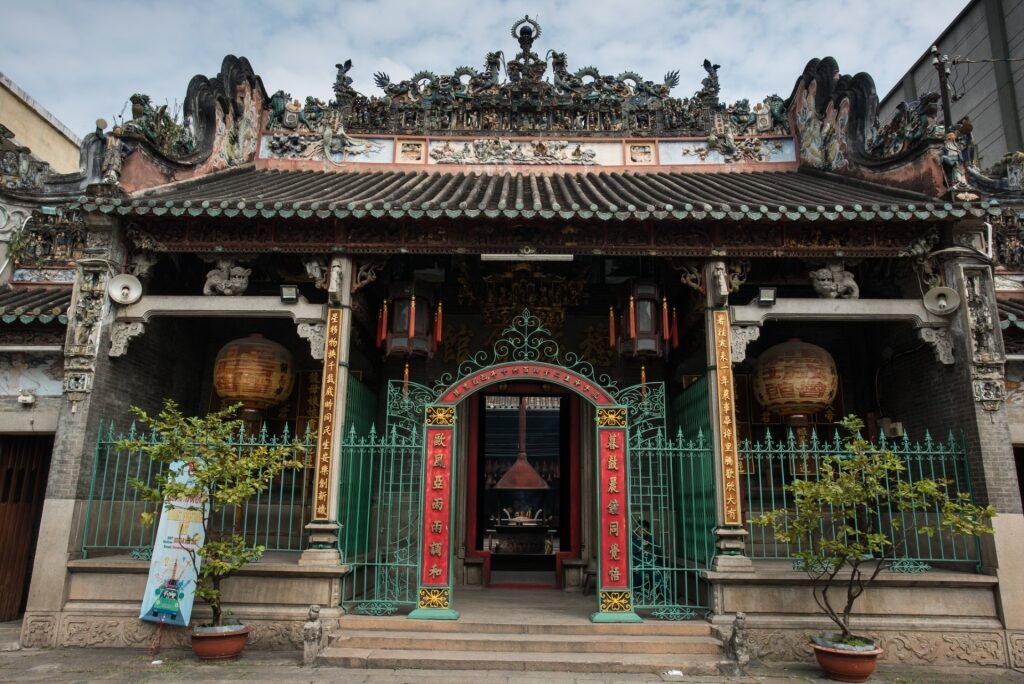
Chinese Quarter, Ho Chi Minh City
Spread across District 5 and some of District 6, Ho Chi Minh City’s Chinese Quarter is one of the most vibrant areas in Vietnam’s biggest city. Known locally as Cholon, the name translates as “big market”, a legacy of the area’s historic role as a prime commercial hub.
Today it’s a heady mixture of Chinese and Vietnamese cultures, home to Chinese medicine shops, herbalists, and tea houses, as well as pagodas that offer a glimpse of how the Chinese community practice their form of Buddhism.
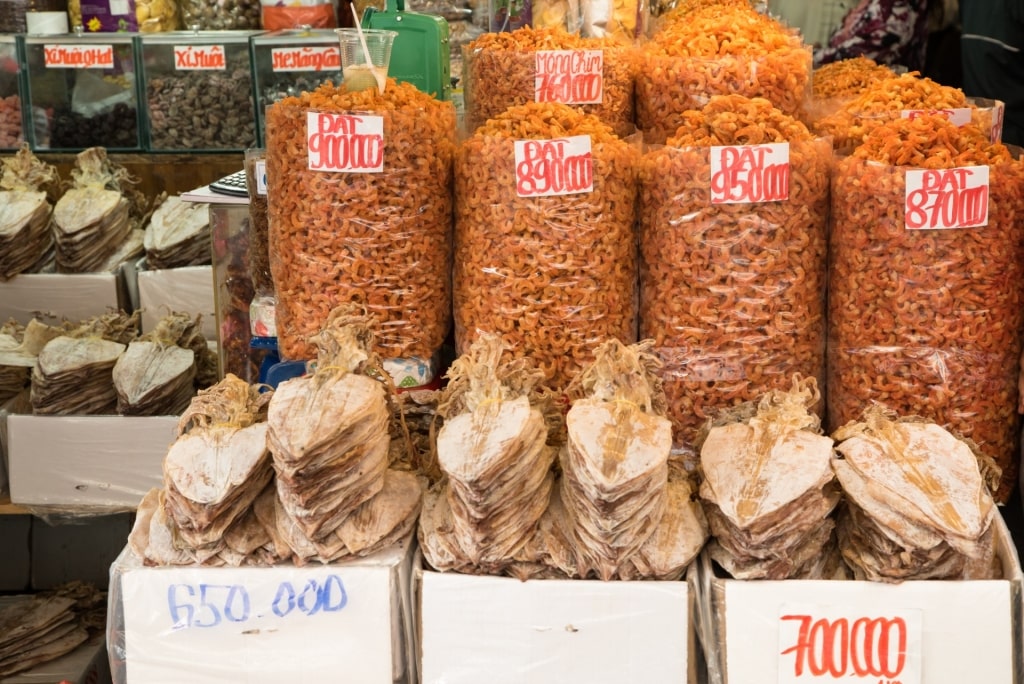
Chinese Quarter, Ho Chi Minh City
Binh Tay Market is a great place to start a visit, a little less touristy than Ben Thanh Market, while the Thien Hau Temple, dedicated to the Chinese sea goddess Mazu, is another must-see. The temple features intricate carvings, beautiful incense coils, and a serene atmosphere.
Look out for the vintage charm of Dai Quang Minh, the city’s oldest cinema that opened its doors in the 1920s and retains an air of old Saigon.
Read: Best Time to Visit Vietnam
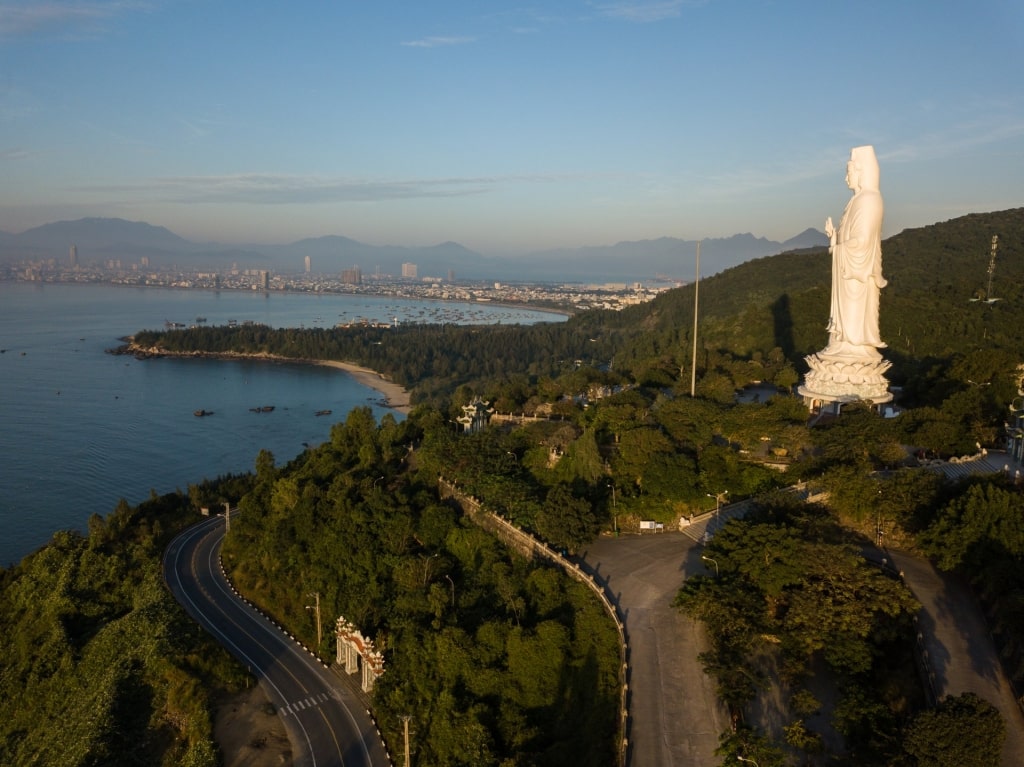
Da Nang
Ready for an exotic adventure? Dive into the rich culture and cuisine of this incredible destination on a cruise to Vietnam. With a little something for everyone, Vietnam is a destination filled with history, beaches, authentic cultural experiences, adventure, and exciting culinary endeavors.
Browse our Asia cruise itineraries and book your next getaway today.
